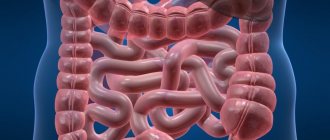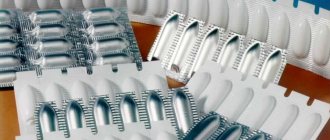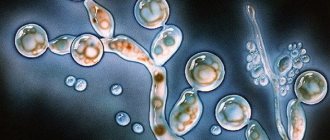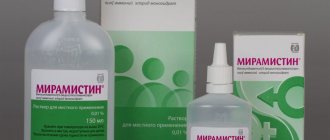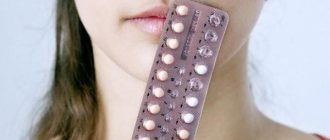Thrush during breastfeeding is a fungal infection of the female urogenital organs, caused by excessive growth and replication of yeast-like pathogenic microorganisms Candida albicans and characterized by the need for the most gentle therapy.
Thrush during breastfeeding_1″ style=”height: 160px; float: right; margin-left: 15px;margin-top: 10px;" />
Symptoms and causes of thrush during breastfeeding

Thrush is nothing more than the popular name for candidiasis. This is a fungal infection caused by yeast-like fungi of the genus Candida. But the disease is not caused by the appearance of Candida fungi itself, since they are present in the normal microflora of the vaginal mucosa, but by their increased reproduction, as well as the introduction of pathogenic strains of this fungus.
Signs of vaginal thrush
In women, vaginal thrush is most common. It is characterized by the following symptoms:
- Burning and itching in the vaginal area and external genitalia.
- White discharge, similar to cottage cheese, with a sour odor.
- An increase in the amount of discharge after sexual intercourse, sleep and contact with water.
- Redness and sometimes swelling of the labia.
- Pain during urination.
The disease can develop not only on the mucous membranes. Thrush of the mammary glands during breastfeeding is not uncommon. Candidiasis can appear on the nipples and areolas of the breast. Often nursing mothers suffer from this disease. A fungal infection can develop during pregnancy or after the onset of lactation.
Signs of breast thrush
- Swollen nipples.
- Peeling and cracks on the areola.
- Rash and white coating.
- Itching and burning.
- Pain when touching the nipples.
- Unpleasant sensations or pain while feeding the baby.
- The pain radiates to the arm or back.
- Reduced lactation.
An infant is also at risk of infection. A nursing mother and a newborn are, one might say, one whole. And thrush can be transmitted from one person to another endlessly. Most often the baby's tongue, gums, palate, and inner surface of the cheeks are affected.
Symptoms of thrush in infants
- The appearance of small spots of white plaque on the oral mucosa, which increase in size if left untreated.
- After removing the plaque, you can see the red and inflamed mucous membrane underneath.
- The child loses his appetite, cries a lot, and refuses to breastfeed.
- The baby doesn't sleep well.
Causes of the disease
The cause of thrush is a violation of the vaginal microflora as a result of the activity of Candida fungi. There are more than 30 factors contributing to the development of candidiasis. These include:
- Decreased general or local immunity.
- The use of broad-spectrum antibiotics.
- Metabolic disorders associated with diabetes, diet, diseases of the endocrine system.
- Pregnancy.
- Use of contraceptives.
- Lack of personal hygiene.
- Resuming sexual intercourse too early after childbirth.
The effect of thrush on lactation
You should not give up breastfeeding during thrush. During illness, the amount of milk may decrease, since pain in the mother reduces lactation. In turn, due to thrush in the mouth, the child sucks weakly, which also provokes a decrease in milk production. The baby may completely refuse to breastfeed.
Expert opinion
Sokolova L. S.
Pediatrician of the highest category
If a baby develops thrush, simultaneous treatment of the child and mother is required.
Causes of thrush during lactation
Chronic candidiasis is far from the only cause of the disease. Disease awaits us at almost every step.
Its reasons may be:
- early onset of sexual activity;
- depression, postpartum stress;
- change in hormonal levels;
- use of harmful hygiene products;
- antibiotic intake;
- sedentary lifestyle.
A woman’s immunity during childbirth is significantly weakened, and the body is subjected to significant tests. Plus, a woman’s hormonal background changes greatly. As a result, the fungus, which previously did not manifest itself in any way, rapidly multiplies, causing candidiasis.
The disease itself can occur even at the time of childbirth, when a woman undergoes surgical interventions, which, given the background of low immunity, are very dangerous.
How to treat thrush while breastfeeding: list of drugs
Only the attending physician can prescribe medications for the treatment of thrush. This is especially true for nursing mothers.
When breastfeeding, doctors recommend using ointments and suppositories. You will have to give up the pills. Cream and ointment are great for treating nipples. It is recommended to begin treatment when the disease is still in its infancy, at its initial stage.
Approved medications for breastfeeding
Pimafucin ®
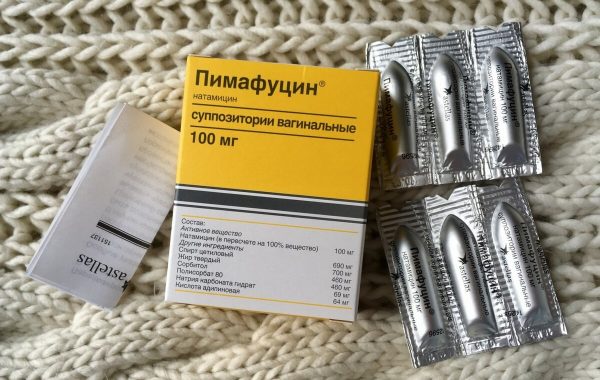
One of the most popular drugs prescribed for thrush. Antifungal antibiotic. This remedy is allowed during pregnancy and breastfeeding. The active ingredient is natamycin [1].
Available in the form of cream, suppositories (candles) and tablets. The cream is sold in plastic or aluminum tubes of 30 g. Candles are packaged in boxes of 3 or 6 pieces. The cream is applied to damaged skin one to four times a day, depending on the severity of the disease. Suppositories are used intravaginally every day before bedtime. The course of treatment lasts from 3 to 9 days, usually 6 days are enough.
Primafungin

Analogue of Pimafucin. Antifungal antibiotic. The active ingredient is natamycin [1]. Available in the form of suppositories (candles) of 3 pcs. Suppositories are used intravaginally every day before bedtime. The course of treatment lasts 6 days.
Ecofucin

Analogue of Pimafucin and Primafungin. The active ingredient is natamycin [1]. Available in the form of suppositories (candles) of 3 or 6 pcs. The method of application is similar to the indicated drugs.
Hexicon
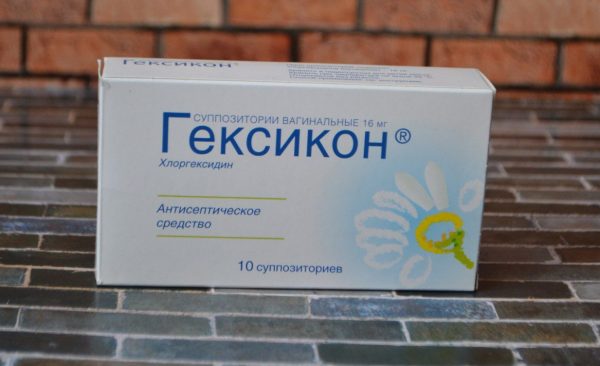
Is an antiseptic. The active ingredient is chlorhexidine [2]. Available in the form of vaginal tablets or suppositories (suppositories). Candles are sold in 1 or 10 pieces. Vaginal tablets – 5 or 10 pcs. It should be noted that Candida fungi are insensitive to chlorhexidine. That is, Hexicon cannot be prescribed as monotherapy against thrush. It is effective in combination with fungicidal antibiotics.
Suppositories are used 1-2 times a day for 7-10 days. The tablets are used intravaginally, pre-moistened with water, 1-2 times a day for 7-10 days. Absolutely harmless during breastfeeding.
Conditionally approved drugs
Zalain ®
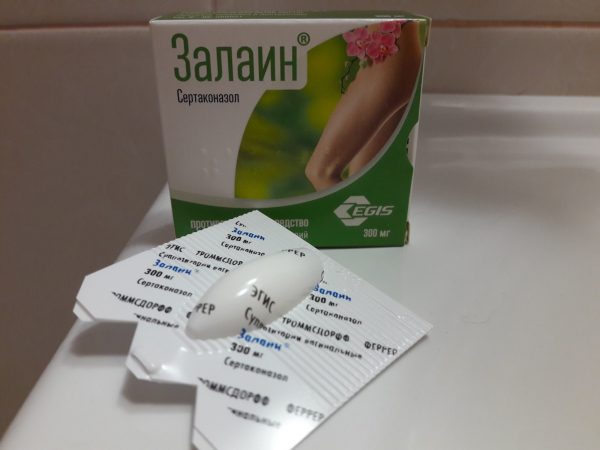
Antifungal drug. The active ingredient is sertaconazole [3]. Available in the form of cream or suppositories (candles). Candles are sold 1 pc. Cream – in tubes of 20 g.
The cream is applied 2 times a day, the radius of application should be increased by 10 cm of healthy skin. Suppositories are used only to treat vaginal infections caused by Candida fungi. The suppository is administered once before bedtime.
No studies have been conducted on the use of Zalain during lactation. Considering the single use of suppositories and the lack of absorption of the drug, the use of Zalain during pregnancy and lactation is possible if the expected benefit to the mother outweighs the possible risk to the fetus or child.
Clotrimazole
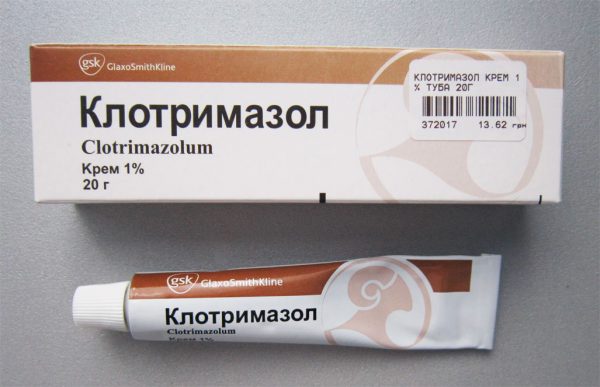
Available in the form of vaginal tablets or cream for external use. The active ingredient is clotrimazole [4].
The cream is sold in aluminum tubes of 20 g. Before applying the cream, damaged skin must be cleaned and dried. Apply a thin layer 2-3 times a day. Treatment is continued for at least 30 days.
Vaginal tablets are packaged in boxes of 6 pieces. They are inserted daily before bedtime as deep as possible into the vagina. The course of treatment is 6 days.
As a result of clinical studies, no negative effects on the health of the breastfed mother or child were found. However, Clotrimazole should be used with caution during breastfeeding. Monitoring by the attending physician is required. Applying the cream to the chest is contraindicated.
Tergynan ®
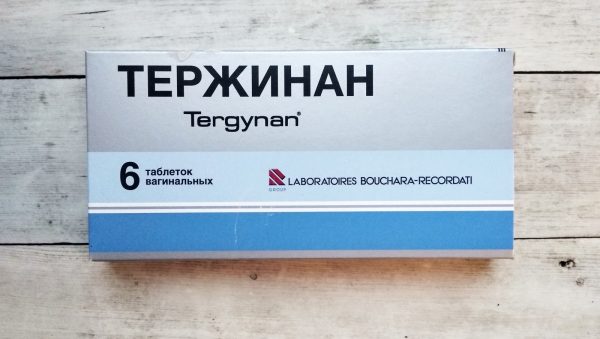
A combination drug that combines the effects of an antifungal, anti-inflammatory and antibiotic. The active ingredients are ternidazole, neomycin, nystatin and prednisolone. Available in the form of vaginal tablets in packs of 6 or 10 pieces.
Use intravaginally daily before bedtime. Before use, soak the tablet in water for 20-30 seconds. The course of treatment is 10 days. The use of Terzhinan during lactation is possible only in cases where the expected benefit of treatment for the mother outweighs the potential risk for the baby.
General list of medications
Table 1 - Comparative table of medications for thrush
| Name: | Release form: | A course of treatment: | Application for hepatitis B: | Price, rub: |
| Pimafucin [1] | Cream, suppositories, tablets | 6 days | Allowed during breastfeeding | 400 |
| Primafungin [1] | Candles | 6 days | Allowed during breastfeeding | 200 (400 rubles per course of treatment) |
| Ecofucin [1] | Candles | 6 days | Allowed during breastfeeding | 400 |
| Hexicon [2] | Vaginal tablets, suppositories | 7-10 days | Allowed during breastfeeding | 200 |
| Zalain [3] | Cream, candles | Candles - once | Conditionally approved drug. Under the supervision of a doctor. | 500 |
| Clotrimazole [4] | Cream, vaginal tablets | 6 days | Conditionally approved drug. Under the supervision of a doctor. | 50 |
| Terzhinan | Vaginal tablets | 10 days | Conditionally approved drug. Under the supervision of a doctor. | 350 |
| Lomexin [5] | Vaginal capsules | One time | When used, itching and burning are very likely. Not applicable for hepatitis B. | 400 |
| Fluconazole [6] | Capsules, powder, solution | One time | Not recommended when breastfeeding | 50 |
What will the doctor prescribe?
For quick and complete treatment of candidiasis, a specialist will prescribe local or systemic antimycotics and means for external treatment of the genital organs. All drugs have special requirements:
- maximum efficiency;
- minimum therapeutic doses;
- lack of ability to pass into breast milk.
If symptoms are severe, complex treatment with all types of drugs will be required. If you consult a doctor at the first sign, you can only use external remedies.
Systemic drugs
Diflucan
To date, only one systemic antimycotic can be prescribed during breastfeeding. The trade name of the drug is Diflucan, the active ingredient is fluconazole, in a dosage of 150 mg. This is the only drug whose safety during breastfeeding has been clinically proven. During testing, it was possible to establish that with a single dose of a capsule with a dose of 150 mg of fluconazole, the concentrations of the active component in breast milk are much lower than in blood plasma. The product is considered absolutely safe for mother and child, rarely causes side effects, but has a wide spectrum of antifungal activity.
None of the Diflucan analogues can be recommended to replace it. The composition of all drugs is different, and accordingly, the concentrations of the substance in plasma and breast milk may also change.
External processing
For treating nipples and external genitalia, the doctor may recommend preparations in the form of solutions. These products quickly eliminate microorganisms, are easily washed off, and have a wide spectrum of action. Moreover, they are much safer than traditional recipes with soda, iodine and potassium permanganate.
During lactation, the best option for a local antiseptic is Miramistin solution. The product is effective against candidobacteria and is not absorbed into the systemic circulation. Can be used for external treatments, douching, and insertion of vaginal tampons.
The second option for external remedies for thrush is medicinal ointments or creams. Almost all drugs containing fungicidal substances are prescribed. More often than others, Pimafucin cream is recommended during lactation. This medicine is based on natamycin, a substance with a broad spectrum of antifungal action and the absence of the ability to penetrate the systemic circulation. The product is applied to the nipples and external genitalia. In the first case, the treatment is carried out after each feeding, and before putting the baby to the breast, the drug is washed off. The cream is applied to the labia 2 times a day - morning and evening, after hygiene procedures.
Vaginal suppositories
Vaginal suppositories are considered a “classic of the genre” in the treatment of thrush. The active ingredients penetrate the source of infection, effectively eliminate fungi, relieve itching and other unpleasant sensations. Suppositories are prescribed for the treatment of exclusively vaginal candidiasis. The most popular drugs:
- Pimafucin . Vaginal dosage form with natamycin. After the candle melts, a foamy liquid is formed, which evenly covers the surface of the internal genital organs and effectively eliminates fungi. The drug is not addictive and cannot cause resistance of candidobacteria, even in the case of incomplete therapy. Prescribe 1 suppository at night for 3-6 days.
- Livarol . An effective antifungal drug containing ketoconazole. The level of absorption is minimal, but it is better to consult a doctor before use. Place 1 candle per day, at night, for 3-5 days in a row. For recurrent candidiasis, the course of treatment is extended to 10 days.
- Terzhinan . Vaginal tablets with a multicomponent composition. It contains antifungal substances, an antibiotic, an anti-inflammatory substance - a derivative of prednisolone. Due to the hormonal component, use must be agreed with a gynecologist. The drug is often prescribed for combined diseases - a combination of fungal and bacterial pathogens.
To prevent relapses of thrush, you should undergo full treatment. You should not stop using suppositories immediately after relief occurs. Discomfort usually goes away on the second day after the start of therapy, but this does not mean that the pathogen has been defeated. For maximum effectiveness, suppositories are inserted deep into the vagina, while lying down. Douching should not be combined with the use of suppositories.
What to do if you have thrush?!
We recommend reading about how to forget about thrush forever... Read more >> |
To prevent thrush, you need to get proper rest, take care of personal hygiene and eat well. The diet should be based on complex carbohydrates (porridge), vegetables, fruits, and protein sources (fish, meat, eggs). In the fight against thrush, you can adjust the menu in favor of lactic acid products. High-quality kefir, cottage cheese, yogurt and curdled milk will help in the fight against fungi. These are sources of beneficial bacteria that are able to defeat pathogenic microorganisms themselves. It is better to avoid sweets, baked goods and white bread while treating candidiasis.
Diet for thrush during breastfeeding
Proper nutrition is one of the important components of successful treatment of the disease. To get rid of thrush, you need to minimize the consumption of foods that provoke the proliferation of Candida fungi:
- sugar and sugar-containing products;
- bakery products;
- sweet fruits;
- juices and soda;
- potato;
- rice;
- seasonings;
- smoked products;
- kvass and alcohol.
There are foods that are recommended to eat if you have thrush:
- garlic – a must;
- natural yoghurts are a must;
- onions and green onions;
- various berries (lingonberries, blueberries, sea buckthorn, cranberries, etc.) and unsweetened juices from them;
- cabbage: cauliflower, broccoli, Brussels sprouts;
- carrots, lemon, plum;
- nuts;
- buckwheat porridge;
- seafood;
- olive oil;
- probiotics with lactobacilli
It is also recommended to drink a lot of water and herbal tea.
Traditional methods of treatment
The action of non-medicinal products is based on creating an alkaline environment in the vagina, which prevents the spread of fungus. The use of traditional methods is possible both together with medications and separately.
Baking soda is the most popular remedy. Dissolve 1-2 teaspoons of soda in a liter of warm boiled water. Wipe the affected areas of the skin with the resulting solution 4 times a day. Douching should be done in the morning and before bed.
Kefir. You need to use only fresh kefir. It eliminates not only the symptoms, but also the cause of the disease, that is, it restores the normal microflora of the vagina. You need to take a tampon, soak it in kefir and insert it into the vagina for 3 hours. After the procedure, remove the tampon and wash yourself.
Sodium tetraborate 20% (borax with glycerin). Antiseptic. Before use, douche with chamomile infusion or warm boiled water. Soak a tampon in a boron solution and place it in the vagina for 30 minutes.
Personal hygiene
Failure to maintain personal hygiene can cause candidiasis. There are several rules to reduce this likelihood.
- Do not touch your genitals with dirty hands; be sure to wash them before doing so.
- Use gels for intimate hygiene, for example, Gynofit and Lactacid.
- Change your underwear daily; it is better to use cotton fabrics.
- After washing, be sure to iron your underwear on both sides.
- Use a personal towel to dry your genitals.



